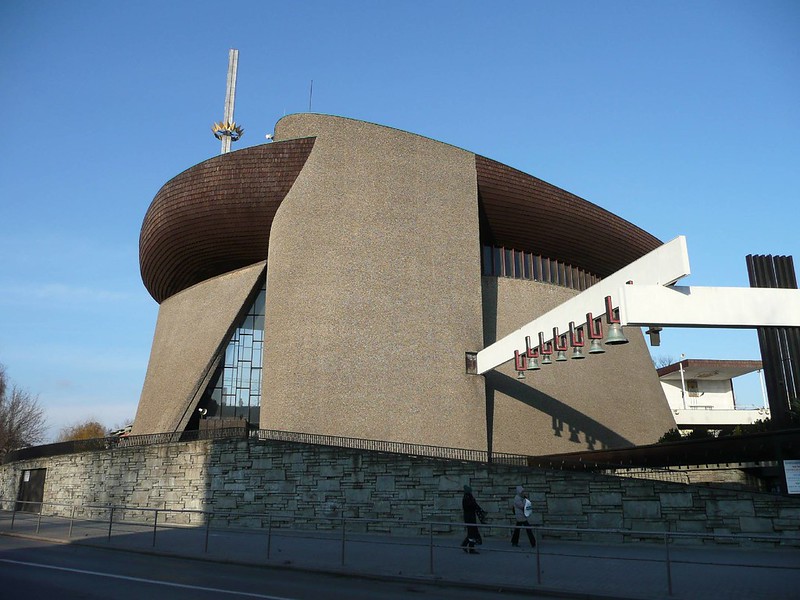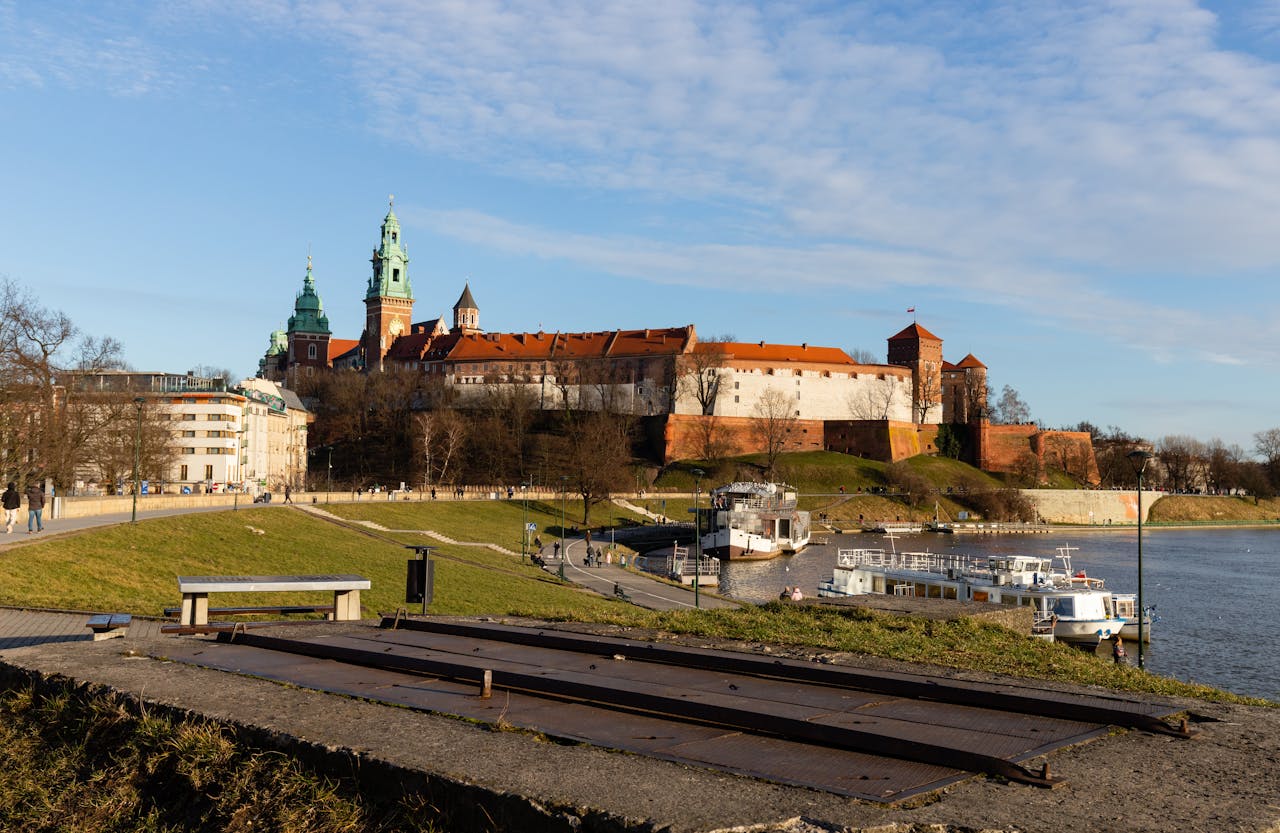Shrouded in both fascinating and heart-wrenching history, Krakow is an exceptional city in Europe. Travelers fly to Krakow to get a glance at the past, from wandering around the medieval Market Square to paying respect to the victims of Auschwitz. Therefore, the number of visitors to Krakow has skyrocketed. If you want to see another side of the city and seek a quite place during high season, these hidden gems in Krakow are for you to visit.
Arka Pana Church

Located in the Nowa Huta district, Arka Pana Church (also known as the Lord’s Ark Church) is an architectural marvel with a powerful history. Built between 1967 and 1977, the church symbolized resistance against the communist regime, which initially opposed its construction. Its design resembles Noah’s Ark, symbolizing salvation, hope, and survival.
Arka Pana Church’s exterior is an example of brutalist architecture, characterized by its bold, blocky shapes and raw concrete materials. Thus, the interior will blow your mind. The church’s main chamber is adorned with modern artwork, including a controversial yet unusual depiction of the crucifixion. Moreover, a statue named ‘Our Lady the Armored’ made out of shrapnel from the Battle of Monte Cassino stands in front of the church. It is one of the most fascinating hidden gems in Krakow.
Rynek Underground Museum
Beneath the bustling Main Market Square lies the Rynek Underground Museum, an interactive museum. This hidden gem in Krakow takes visitors through an underground excavation site. You can see remnants of medieval Krakow, from cobblestone streets to ancient trade stalls. The museum offers a fascinating journey back in time, revealing Krakow’s layers of history that lie just beneath the surface.
Besides fact-based exhibitions, Rynek Underground Museum also challenges your imagination. It brings you to delve into a folklore featuring vampires, Interestingly, people in medieval Krakow believed that vampirism can be practiced. Thus, as a punishment for the ‘practitioners’, they were buried in a fetal position. Rynek Underground Museum brings this legend back to life through its displays.

